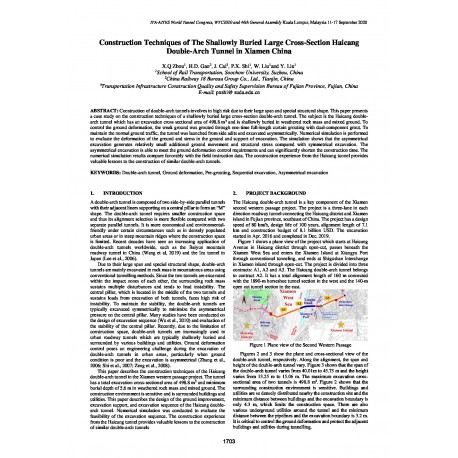Cart
0
0
No document
0,00 €
Total
Document successfully added to your shopping cart
Quantity
Total
There are 0 items in your cart.
There is 1 item in your cart.
Total documents
Total shipping
To be determined
Total
Search & filter
Search for a publication
Search & filter

Construction Techniques of the Shallowly Buried Large Cross-Section Haicang Double-Arch Tunnel in Xiamen China
id685
P. Shi / H. Gao / X. Zhou / J. Cai / W. Liu / Y. Liu
Construction of double-arch tunnels involves in high risk due to their large span and special structural shape. This paper presents a case study on the construction techniques of a shallowly buried large cross-section double-arch tunnel. The subject is the Haicang doublearch tunnel which has an excavation cross sectional area of 498.8 m2 and is shallowly buried in weathered rock mass and mixed ground. To control the ground deformation, the weak ground was grouted through one-time full-length curtain grouting with dual-component grout. To maintain the normal ground traffic, the tunnel was launched from side adits and excavated asymmetrically. Numerical simulation is performed to evaluate the deformation of the ground and stress in the ground and support of excavation. The simulation shows that the asymmetrical excavation generates relatively small additional ground movement and structural stress compared with symmetrical excavation. The asymmetrical excavation is able to meet the ground deformation control requirements and can significantly shorten the construction time. The numerical simulation results compare favorably with the field instruction data. The construction experience from the Haicang tunnel provides valuable lessons to the construction of similar double-arch tunnels.


